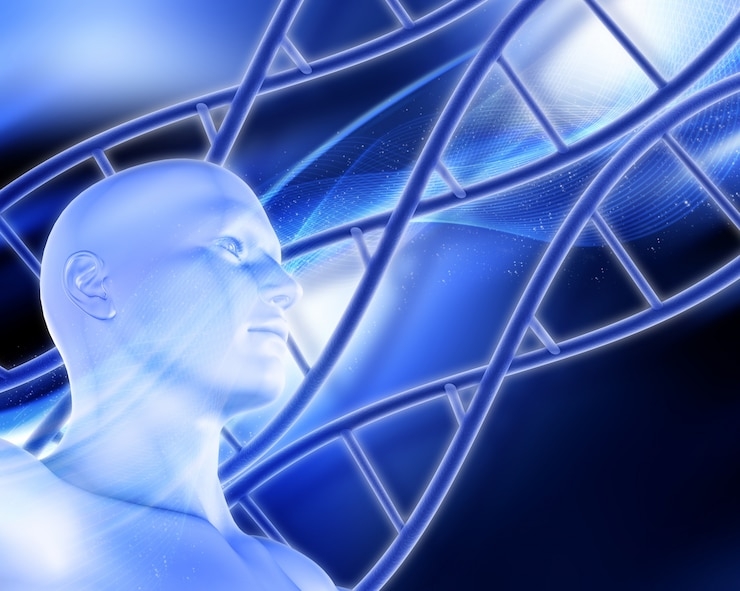We reach more than 65,000 registered users in Dec!! Register Now

New Study Reveals the Genetics of Human Head Shape
- November 18, 2023
- 8 Views
- 0 Likes
- 0 Comment
Researchers at the University of Pittsburgh and KU Leuven have discovered a suite of genes that influence head shape in humans. These findings, published this week in Nature Communications, help explain the diversity of human head shapes and may also offer important clues about the genetic basis of conditions that affect the skull, such as craniosynostosis.
By analyzing measurements of the cranial vault — the part of the skull that forms the rounded top of the head and protects the brain — the team identified 30 regions of the genome associated with different aspects of head shape, 29 of which have not been reported previously.
“Anthropologists have speculated and debated the genetics of cranial vault shape since the early 20th century,” said co-senior author Seth Weinberg, Ph.D., professor of oral and craniofacial sciences in the Pitt School of Dental Medicine and co-director of the Center for Craniofacial and Dental Genetics. “We knew from certain rare human conditions and animal experiments that genes play an important role in vault size and shape, but very little was known about the genetic basis for typical features we see in the general population, such as what makes someone’s head long and narrow versus short and wide. This study reveals some of the key genes driving variation in this part of the human body.” According to the researchers, one application of better understanding the factors that drive natural variation in human head shape is informing paleoanthropology studies, potentially shedding light on the early development of modern humans.
According to the researchers, one application of better understanding the factors that drive natural variation in human head shape is informing paleoanthropology studies, potentially shedding light on the early development of modern humans.
Weinberg and colleagues used magnetic resonance (MR) scans from more than 6,000 adolescents to extract 3D surfaces corresponding to the cranial vault. After dividing the 3D vault surfaces into incrementally smaller anatomical subparts and quantifying the shape of these subparts, they tested more than 10 million genetic variants for evidence of statistical association with measures of vault shape.
“Previous genetic studies of the cranial vault involved a small number of relatively simple measures,” added Weinberg. “While such measures are often easy to obtain, they may fail to capture features that are biologically relevant. Our analysis used an innovative approach capable of describing 3D vault shape in much more comprehensive and nuanced ways. This approach increased our ability to find genetic associations.”
An important discovery was that many of the strong associations are near genes that play key roles in the early formation of the head and face and regulation of bone development. For example, variants in and near the gene RUNX2, a major player in coordinating development of the skull, were associated with multiple aspects of vault shape.
While some genes, including RUNX2, had global effects involving the entire vault, others showed more localized effects that only impacted a specific portion of the vault, such as the central forehead.
When the researchers compared the 30 genomic regions associated with head shape across participants with European, African and Indigenous American ancestry, they found that the majority of genetic associations were shared across these different ancestral groups.
Although the study focused on healthy participants, the findings may reveal important clues about the biological basis of diseases involving the cranial vault, according to Weinberg.
One of these conditions is craniosynostosis, which occurs when the bones of the skull fuse too early while the brain is still growing rapidly. Without neurosurgery, craniosynostosis can cause permanent disfigurement, brain damage, blindness and even death. The team showed that variants near three genes associated with vault shape, BMP2, BBS9 and ZIC2, were also associated with craniosynostosis, suggesting that these genes could play a role in the development of the disease.
List of Referenes
- Seppe Goovaerts, Hanne Hoskens, Ryan J. Eller, Noah Herrick, Anthony M. Musolf, Cristina M. Justice, Meng Yuan, Sahin Naqvi, Myoung Keun Lee, Dirk Vandermeulen, Heather L. Szabo-Rogers, Paul A. Romitti, Simeon A. Boyadjiev, Mary L. Marazita, John R. Shaffer, Mark D. Shriver, Joanna Wysocka, Susan Walsh, Seth M. Weinberg, Peter Claes. Joint multi-ancestry and admixed GWAS reveals the complex genetics behind human cranial vault shape. Nature Communications, 2023; 14 (1) DOI: 10.1038/s41467-023-43237-8
Cite This Article as
No tags found for this post









